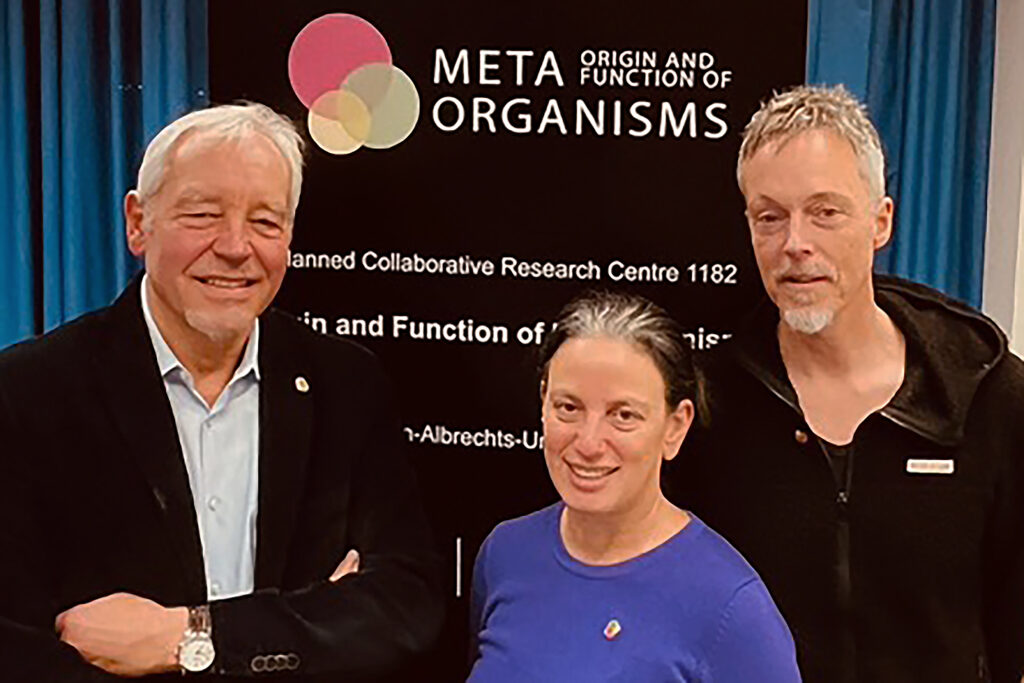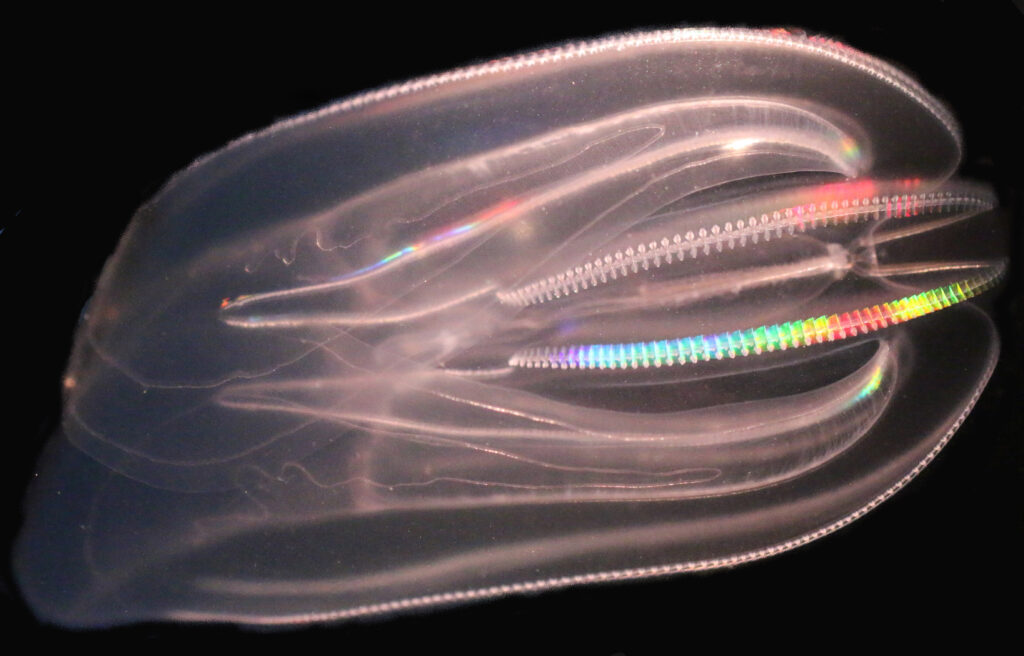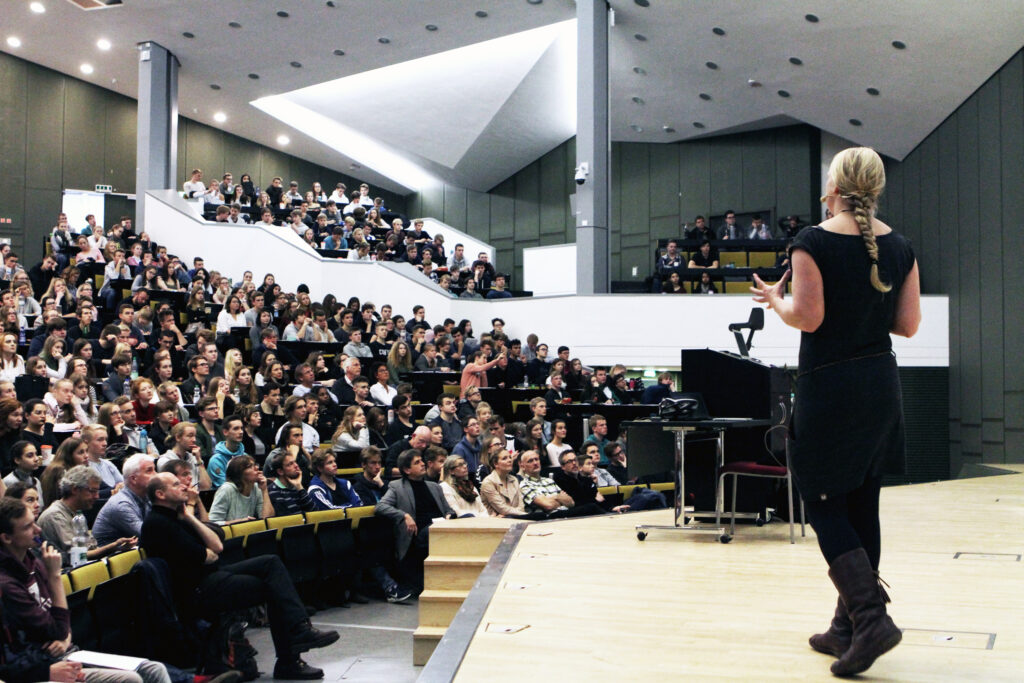What role do archaea play in the human microbiome?
International research team with the participation of Kiel University for the first time systematically describes the involvement of archaea in the interaction of the body with its symbiotic microorganisms
All multicellular living beings carry an unimaginably large number of microorganisms in and on their bodies. The microbiome, i.e. the totality of these microorganisms, forms a unit together with the host organism, the so-called metaorganism. This metaorganism has developed during the course of evolution by mutual exchange of its components. The interaction between the body and symbiotic microorganisms is of central importance for the healthy functioning of the metaorganism. From supporting the uptake of nutrients to protecting against pathogens, the microbiome performs vital tasks for the host organism. On the other hand, disturbances of the microbiome can cause various serious diseases, in humans for example diabetes, obesity or chronic inflammatory diseases. For several years, researchers worldwide have therefore been intensively studying the highly complex interactions of host organisms and microorganisms and their involvement in central life processes. One particular group of microorganisms has so far received little attention: the archaea, formerly known as archaebacteria or primordial bacteria. However, just like the other components of the microbiome, archaea are probably also involved in maintaining the health and fitness of the host.
An international research team involving Kiel University, the Medical University of Graz, the Institut Pasteur Paris and the University of Clermont-Auvergne has now presented an inventory of the role of archaea in host-microbe interactions. The researchers conclude that certain groups of archaea are predestined to enter into close associations with other microorganisms and the host in the context of the metaorganism. The researchers, including Ruth Schmitz-Streit, Professor at the Institute for General Microbiology at Kiel University, recently published their findings in the renowned journal Nature Reviews Microbiology.
Archaea find special niches in the host
Numerous different microorganisms play an important role in the health and fitness, including humans, through their interactions with their host organism. The ability to enter into functional communication with the host also characterizes the archaea. They are basically known for their many special properties. Representatives of this group of microorganisms can also exist as so-called extremophiles under extraordinary living conditions, such as very high temperatures, high salt concentrations or in acidic environments. “Archaea have developed various strategies for adapting to extreme conditions. These include the ability to live with a permanently low energy supply. Many archaea exist in the range of a barely sustainable energy minimum. This makes them particularly suitable for interaction with other microorganisms and the host organism. For this reason, we want to shed more light on the involvement of archaea in future research into host-microbe relationships”, emphasises microbiologist Schmitz-Streit, who heads two projects in the Kiel Collaborative Research Centre (CRC) 1182 ‘Origin and Function of Metaorganisms’.
In addition to giving an overview on the archaea associated with animals and plants, the researchers focused their work not only on the so-called thaumarchaeota found in the human skin microbiome but also on a very specific group of archaea: the methane-forming species. They occur preferentially in oxygen-poor environments such as the human intestine and provide substantial support for the metabolic activity of bacteria living there, making their conversions even more efficient. The end product is methane. Just how extensive these processes are can be seen, for example, from the fact that a human being produces on average about a third of a litre of methane gas per day, and it can even be detected in the breath of around 20 percent of the population.
Are archaea involved in the development of diseases?
Apart from their role in metabolic processes, the researchers also discussed how archaea might be involved in the development of diseases. So far no pathogenic archaeon has been identified. “However, for example, an active interaction of Methanobrevibacter smithii and Methanosphaera stadtmanae with the human microbiome has recently been demonstrated. The human immune system is able to recognise them and react to them,” emphasises Ruth Schmitz-Streit. “These two most common archaea of the human intestinal tract have thus actively adapted to the human ecosystem in the course of evolution,” emphasizes Christiane Moissl-Eichinger, Professor of Interactive Microbiome Research at the Medical University of Graz. The activation of the immune system caused by the archaea can be seen, for example, in the release of pro-inflammatory signal proteins, so-called cytokines. These reactions differ in intensity between the two archaeal species. Methanobrevibacter smithii and Methanosphaera stadtmanae also occur in very different numbers depending on the state of health of the host, which at least suggests a connection between their frequency and human health and the development of diseases.
On the one hand, it is discussed whether early exposure of children to archaea has a positive effect on the risk of asthma. Some archaea could also have a health-promoting effect by breaking down the so-called trimethylamines (TMA) – toxic key molecules that can cause arteriosclerosis, among other things. The first therapeutic approaches based on the use of TMA-degrading methanomassiliicoccales are already in clinical trials as so-called ‘archaebiotics’. On the other hand, researchers suspect that an increased number of methane-forming archaea could be associated with a number of serious diseases, for example colon cancer or inflammatory bowel diseases. However, the authors of the current study assume that the archaea are not causally involved in the development of the disease. It is possible, however, that their role is to support the activity of pathogenic bacteria, for example by breaking down inhibitory metabolic products.
In future research projects, the researchers want to investigate a possible causal involvement of the archaea in the development of the disease and especially the medical significance of the methane they produce. In addition, they plan to eliminate previous methodological difficulties in the cultivation and molecular detection of these microorganisms. The still emerging field of research thus opens up a multitude of novel questions. For example, the scientists intend to investigate certain specific adaptations of archaea to their host organism or their interplay with bacterial components of the human microbiome in greater detail in the future, thus gradually gaining a better understanding of their part in the balance or disruption of the metaorganism.
Original publication:
Guillaume Borrel, Jean-François Brugère, Simonetta Gribaldo, Ruth A. Schmitz & Christine Moissl-Eichinger (2020): The host-associated archaeome. Nature Reviews Microbiology First Published 20 July 2020
DOI: 10.1038/s41579-020-0407-y
Photos are available for Download:
www.uni-kiel.de/de/pressemitteilungen/2020/184-schmitzstreit-naturerevmic.jpg Caption: Kiel University’s Professor Ruth Schmitz-Streit together with international colleagues presented an inventory of the role of archaea in host-microbe interactions.
© Stefan Kolbe
Contact:
Prof. Ruth Schmitz-Streit
Molecular Biology of Microorganisms
Institute for General Microbiology, Kiel University
Phone: +49 (0) 431 880-4334
Email: rschmitz@ifam.uni-kiel.de
More information:
Molecular Biology of Microorganisms (AG Schmitz-Streit),
Institute for General Microbiology, Kiel University:
www.mikrobio.uni-kiel.de/de/ag-schmitz-streit
Interactive Microbiome Research (AG Moissl-Eichinger),
Center for Microbiome Research, Medical University Graz
www.medunigraz.at/center-for-microbiome-research/ag-moissl-eichinger/





